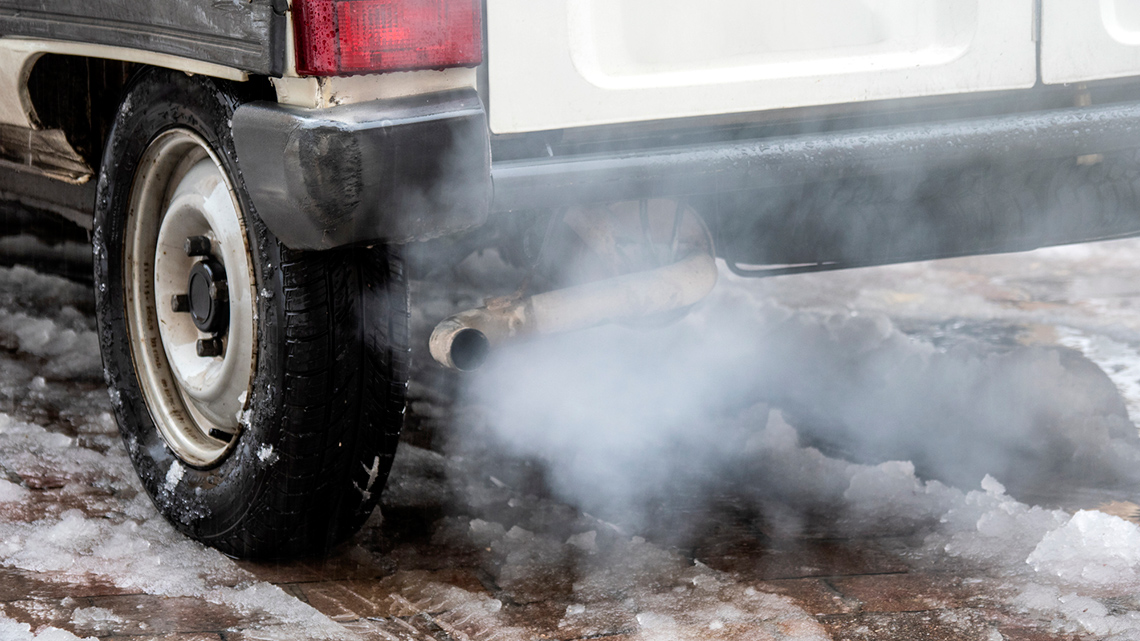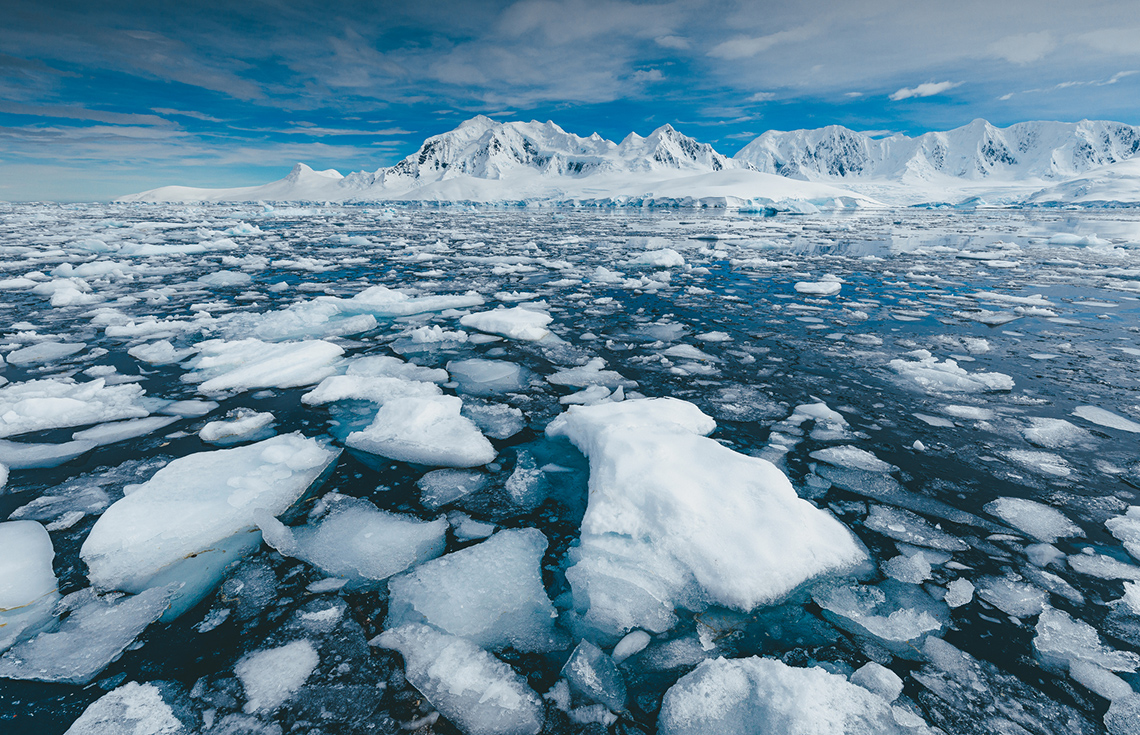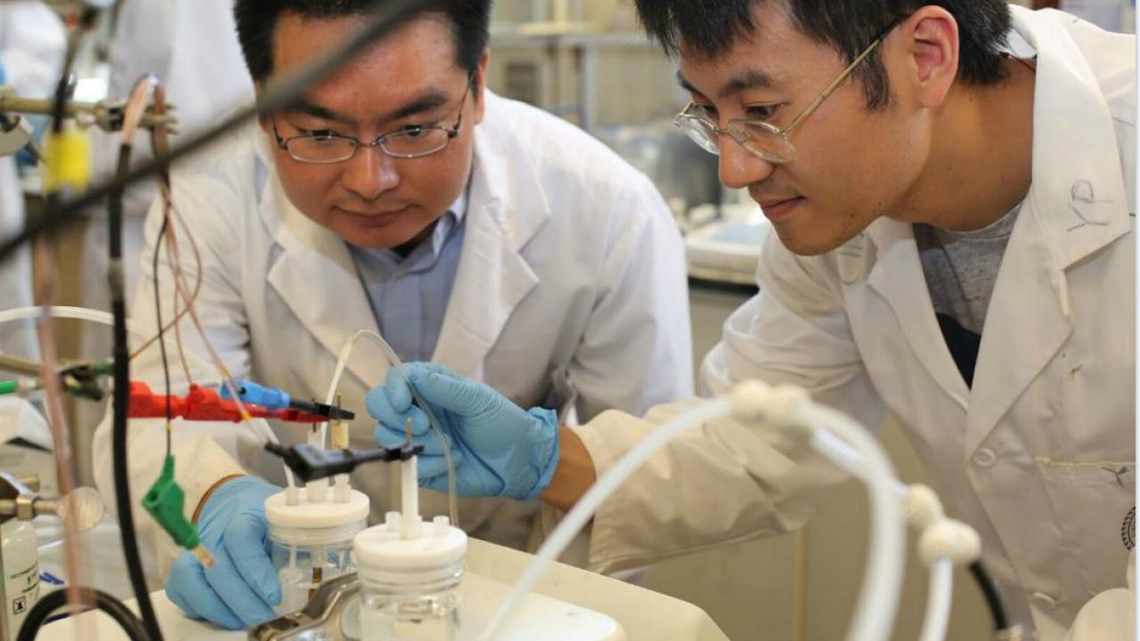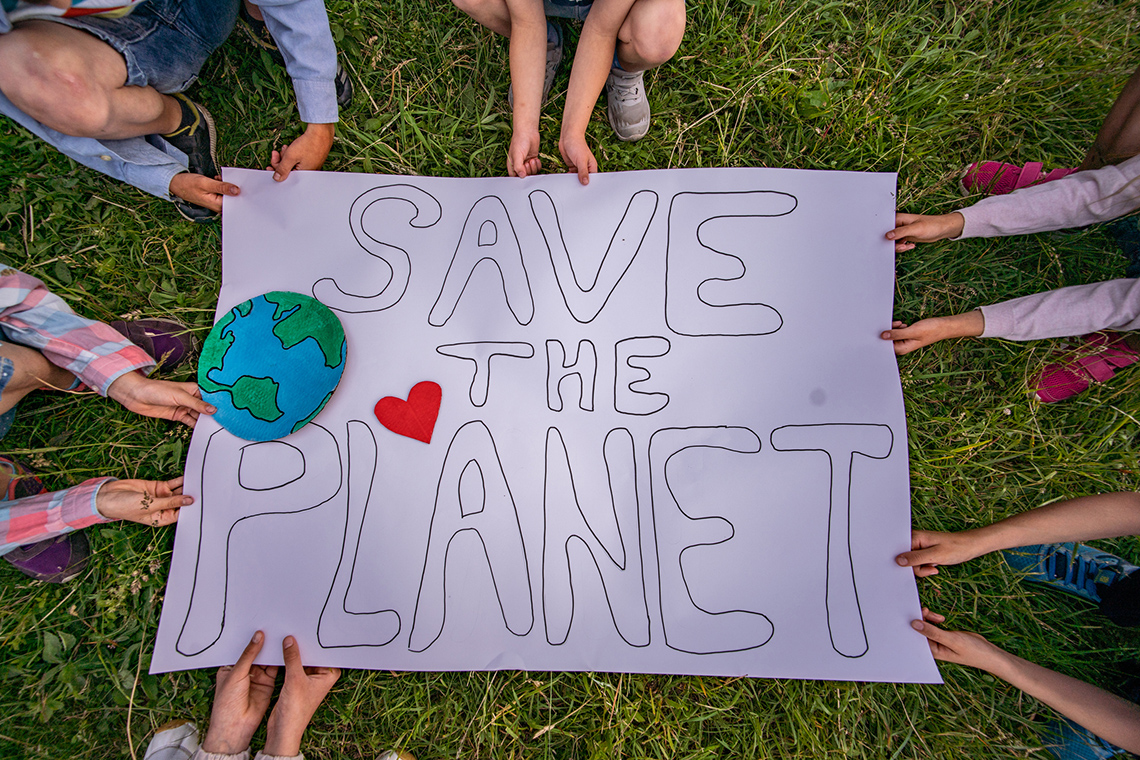Minds On
Greenhouse gases

Greenhouse gases are created through different human activities.
Some of these include:
- Agriculture
- Industrial manufacturing
- Transportation
- Burning fuel for electricity and heat
- Garbage and waste processes
- Leaks and unattended emissions.
Explore the following graph of greenhouse gas emissions in Canada in the years 1990, 2005 and 2019. What do you notice? What do you wonder?

greenhouse gas emissions by province and territory, Canada, 1990, 2005 and 2019
DescriptionThis is a bar graph showing the results of greenhouse gas emissions by province and territory in Canada, for the years 1990, 2005, and 2019. All provinces are on the x axis, and the y axis is the greenhouse gas emission in megatonnes of carbon dioxide equivalent.
From left to right; Newfoundland and Labrador emitted 9.5 megatonnes in 1990, 10.5 megatonnes in 2005, and 11.1 megatonnes in 2019. Prince Edward Island emitted 1.9 megatonnes in 1990, 2 megatonnes in 2005, and 1.8 megatonnes in 2019. Nova Scotia emitted 19.6 megatonnes in 1990, 23.3 megatonnes in 2005, and 16.2 megatonnes in 2019. New Brunswick emitted 16.3 megatonnes in 1990, 20 megatonnes in 2005, and 12.4 megatonnes in 2019.
Quebec emitted 86.4 megatonnes in 1990, 87.6 megatonnes in 2005, and 83.7 megatonnes in 2019. Ontario emitted 180 megatonnes in 1990, 205.7 megatonnes in 2005, and 163.2 megatonnes in 2019. Manitoba emitted 19.6 megatonnes in 1990, 20.6 megatonnes in 2005, and 22.6 megatonnes in 2019. Saskatchewan emitted 43.3 megatonnes in 1990, 67.8 megatonnes in 2005, and 74.8 megatonnes in 2019. Alberta emitted 171.8 megatonnes in 1990, 235.5 megatonnes in 2005, and 275.8 megatonnes in 2019. British Columbia emitted 51.8 megatonnes in 1990, 63 megatonnes in 2005, and 65.7 megatonnes in 2019.
Yukon emitted 0.6 megatonnes in 1990, 0.6 megatonnes in 2005, and 0.7 megatonnes in 2019. Northwest Territories emitted 1.8 megatonnes in 1990, 1.6 megatonnes in 2005, and 1.4 megatonnes in 2019. For Nunavut, data wasn’t available in 1990, the territory emitted 0.6 megatonnes in 2005, and 0.7 megatonnes in 2019.
Complete the Observe, Think, and Wonder Activity in your notebook or using the following fillable and printable document. If you would like, you can use speech-to-text or audio recording tools to record your thoughts.

|
I observe… (record points you can observe with senses) |

|
I think… (record what you think from what you’ve noticed and what you might already know) |

|
I wonder… (record questions you may have) |
Press the ‘Activity’ button to access Observe, Think, and Wonder Activity.
Action
Greenhouse gases and our climate
Greenhouse gas is a gas in the atmosphere that allows radiation from the sun to pass through the atmosphere. This gas absorbs this solar radiation that the earth emits back into space which makes the surface of the earth warmer.
 Description
Description
Yellow partial circle labeled Sun. Yellow arrows move outward toward a circular Earth inside an empty purple circle. Two outside yellow arrows bounce off of the purple circle and are directed outward. Two inner yellow arrows bounce off of Earth two times and are directed outward. One inner yellow arrow points directly to Earth.
Greenhouse gases include water vapour, carbon dioxide, methane, ozone, and fluorocarbons.
Human activity is connected to greenhouse gases.
Where do greenhouse gases come from?
Explore the following pie chart, which depicts the percentage of greenhouse gas emissions and where it is emitted from.

Source of greenhouse gas emissions
DescriptionThis is a pie chart for the source of greenhouse gas emissions in Canada, as of 2015. 45 percent is emitted by burning fuel for electricity and heat. 28 percent is emitted by transportation. Eight percent are leaks and unattended emissions. Seven percent is emitted due to industrial manufacturing. Eight percent is emitted from agriculture, and four percent is emitted due to garbage and waste process.
- Based on the pie graph, what is causing the most greenhouse gas emissions?
- What causes the least amount of emissions?
Record your responses in a notebook or another method of your choice.
When you’re ready, press ‘Let’s Check!’ to access possible answers.
- Burning fuel for electricity and heat causes almost half of the emissions, and transportation adds another quarter. The two collectively produce almost three quarter of the greenhouse gas emissions.
- Garbage and waste causes the least amount of greenhouse gas emissions.
The effect
The greenhouse gas effect is a naturally occurring phenomenon in which specific gases in the atmosphere of the Earth trap heat from the sun. Essentially the Earth acts as the glass in a greenhouse resulting in the Earth’s temperature being 14 degrees Celsius warmer than it should be.

The greenhouse effect
DescriptionThis is the greenhouse effect. It starts with the sun and the solar radiation. The sun’s rays are reflected by the Earth and the atmosphere. Most radiation is absorbed by the Earth’s surface and warms it.
Some of the infrared radiation passes through the atmosphere, where some is absorbed and re-emitted in all directions by greenhouse gas molecules. This results in warming the Earth’s surface and the lower atmosphere.
Describe the greenhouse effect in your own terms.
In your description, consider:
- the Sun
- how the earth absorbs the radiation
- how the surface of the earth responds to the radiation from the sun
Record your thoughts and ideas in a notebook or another method of your choice.
Did You Know?
Did you know?
So, how are these greenhouse gases affecting our climate?
Sometime during this century, the amount of greenhouse gases trapped in the atmosphere is expected to double. This will continue to heat planet Earth much faster than ever before.
One of the most obvious effects of rising temperatures is that glaciers and ice caps are melting quickly. The melted water drains into oceans, causing sea levels to rise and oceans to become less salty. Rising sea levels could flood costal communities, displacing communities. It will also alter ecosystems and natural habitats, shifting seasonal activities, migration patterns, and various species.

The future of greenhouse gases
Reducing greenhouse gas emissions is a critical step in slowing the trend of global warming.
Explore one of the following options of future initiatives and ideas that will be available to reduce greenhouse gases and combat global warming.
Press the following tabs to access each option.
You will now access the article “Can Tiny Golden Needles Help Us Reduce Carbon Dioxide Emissions?”

Press tvo today to access Can Tiny Golden Needles Help Us Reduce Carbon Dioxide Emissions?.
tvo today (Opens in a new tab)You will now access the article “Is reducing natural gas the key to hitting Ontario’s climate targets?”

Press tvo today to access Is reducing natural gas the key to hitting Ontario’s climate targets?.
tvo today (Opens in a new tab)You will now access the article “Sidewalk Labs’ big idea for heating and cooling buildings is lukewarm water. Don’t laugh.”

Press tvo today to access Sidewalk Labs’ big idea for heating and cooling buildings is lukewarm water. Don’t laugh.
tvo today (Opens in a new tab)After accessing and exploring one of the articles, create a one paragraph summary of how the idea works to reduce greenhouse gas emissions. Be sure to include the environmental impacts and impacts on people if mentioned in the article.
Record your paragraph in a notebook or another method of your choice.
Action plans
Student Success
Let’s think!
There are various ways we can reduce greenhouse gases, and every little bit counts!
Create a list of ideas on how we can reduce greenhouse gases.
If possible, share and compare your list with a partner.
Record your ideas in a notebook or another method of your choice.
When you’re ready, press ‘Let’s Check!’ to access possible ideas.
- ride bicycles, walk, or take public transportation
- if possible, use hybrid transportation because they use electricity instead of gasoline
- eat less meat and more locally grown vegetables (livestock meat and dairy are responsible for 14.5% of human made global greenhouse gases)
- lower the heating and air conditioning settings to avoid consuming as much electricity, gas, and/or propane
- reduce, reuse, recycle (this includes buying reusable items rather than disposable ones such as water bottles, buying items with less packaging, recycling over waste, etc.)
- plant trees or a garden
- use less water
- take care of your clothing to help it last longer.
- conserve energy (shutting off lights, unplugging electronics, etc.)
- continue to learn more and educate others about greenhouse gases and climate change.
Other initiatives
Let’s explore another initiative that helps to reduce greenhouse gas emissions, carbon footprints, and contribute to a sustainable future.
Andrew Judge is the coordinator of Indigenous studies at Kitchener’s Conestoga College.
In 2019, he began an Indigenous Garden initiative, Minjimendan (Anishinaabemowin for “state of remembering”) in Cambridge, Ontario. This garden is run by volunteers in the community with a hope of providing visitors and volunteers with the opportunity learn more about Indigenous land-based practices, such as habitat restoration. By using traditional planting techniques, this garden can help provide food for a community without relying on practices that increase greenhouse gas emissions, including using energy sources like burning fossil fuels.
The garden’s design is based on Anishinaabe teachings and teachings from various Indigenous elders across the globe.
Check out this video entitled “Indigenous Garden” to learn more about this unique garden.
Why do you think Andrew center the garden around a spiral?
When you’re ready, press ‘Let’s Check!’ to access possible answers.
It is centered around a spiral to bring and create energy to the garden.
Consolidation
Future impacts
This learning activity connects new and existing approaches for young scientists to create positive changes in their communities.

Your action plan

It’s now your turn to create a plan of action on how a community could reduce greenhouse gas emissions.
Present your action plan in any format of your choice. You can create a presentation, poster, audio recording, infographic, or another method of your choice.
Consider:
- How will the community achieve their goals?
For example, if a goal is planting a community garden, what might the community need to consider or think about?
- How can the community track their progress towards their goals? How will they know if they are being successful?
Your may use the following checklist to guide your action plan:
I have…
Pause and Reflect
Pause and reflect
Reflect on what you’ve learned in this learning activity about greenhouse gas emissions:
- What is causing greenhouse gas emissions?
- What effect is this having on our environment?
- What can be done to reduce these effects?
Complete the Greenhouse Gas Reflection in your notebook or using the following fillable and printable document. If you would like, you can use speech-to-text or audio recording tools to record your thoughts.
|
Causes of greenhouse gas emissions |
Effects of greenhouse gas emissions |
Strategies to mitigate greenhouse gas emissions |
|---|---|---|
Press the ‘Activity’ button to access Greenhouse Gas Reflection.
Reflection
As you read the following descriptions, select the one that best describes your current understanding of the learning in this activity. Press the corresponding button once you have made your choice.
I feel…
Now, expand on your ideas by recording your thoughts using a voice recorder, speech-to-text, or writing tool.
When you review your notes on this learning activity later, reflect on whether you would select a different description based on your further review of the material in this learning activity.